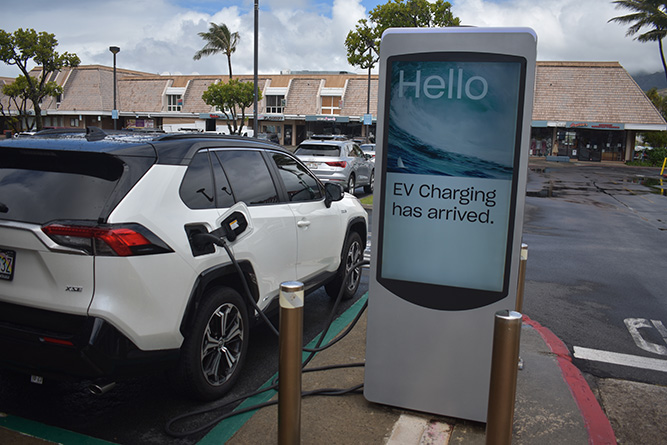New report: ‘Power Pivot — Transitioning Hawaiʻi Gasoline Superusers to Electric Vehicles’

A report released today identifies a high-impact strategy for Hawaiʻi’s clean energy future: targeting gasoline “superusers.” The report, titled “Power Pivot — Transitioning Hawaiʻi Gasoline Superusers to Electric Vehicles,” demonstrates how addressing this small but key group of drivers could dramatically help those most economically burdened by gasoline expenses and reduce the state’s overall fuel consumption while accelerating its transition to cleaner transportation.
Released by Ulupono Initiative and Coltura, the paper focuses on these superusers, which account for approximately 65,000, or 6.8%, of the state’s drivers. The superusers have extensive and costly driving habits, often exceeding 40,000 miles annually, compared to the non-superusers average of 8,500 miles annually. Collectively, these superusers consume nearly 26% of Hawaiʻi’s gasoline.
According to the report, transitioning these superusers to electric vehicles (EVs) could save them more than $220 million annually on fuel costs and reduce statewide carbon emissions by 4%. This move could significantly reduce carbon emissions and contribute to Hawaiʻi’s climate goals, which aim for a 50% reduction in emissions by 2030 and net-negative carbon emissions by 2045.
“In the past, new EV owners have been those who typically can afford to make the switch,” said Kathleen Rooney, director of transportation policy and programs with Ulupono Initiative. “What this new report emphasizes is that the bigger community impact will be felt through the superusers’ transition to EVs because they consume far more gasoline, spend a high percentage of their income on gasoline, and generate more pollution than non-superusers. If we can help them access electric vehicles, we can save them many millions of dollars and reduce our emissions much more quickly.”
The report provides detailed demographic and behavioral profiles of these superusers, noting that they are disproportionately represented among rural residents as well as Native Hawaiian, Pacific Islander, Asian and Hispanic drivers. These drivers also tend to own low-fuel-efficiency vehicles such as trucks and SUVs, which exacerbates their gasoline consumption. The economic burden on these households is considerable, with superusers spending up to $13,700 annually on gasoline, which constitutes 14% of their household income. Given their high-mileage driving, they are also unlikely to be able to walk, bike, or take transit as part of their daily routine.
“The purpose of this report is to highlight the superuser subset of Hawaiʻi’s driving population and outline ways that gasoline consumption data can be used by policy and decision makers,” said Matthew Metz, founder and co-executive director of Coltura. “Hawaiʻi has a great opportunity to support and prioritize equitable access to EVs for lower-income superusers that would benefit both the drivers and the state’s climate goals. Transitioning one superuser to an EV has the same carbon and fuel savings impact as transitioning five other drivers.”
To address this issue, the report recommends tailored policies and incentives to encourage superusers to switch to EVs. These measures include providing targeted information about the cost savings of EVs, integrating superuser-specific insights into existing transportation programs, and developing new incentives to lower the barriers to EV adoption for this group.
“We encourage Hawaiʻi lawmakers to look at what the California Legislature on August 30 of this year when it passed a bill with unanimous Democratic and Republican votes to update the state’s Clean Cars 4 All program to support lower-income high-mileage drivers with older, high-polluting vehicles transition to EVs,” Metz added.
The full report is available online here: Power Pivot — Transitioning Hawaiʻi Gasoline Superusers to Electric Vehicles







